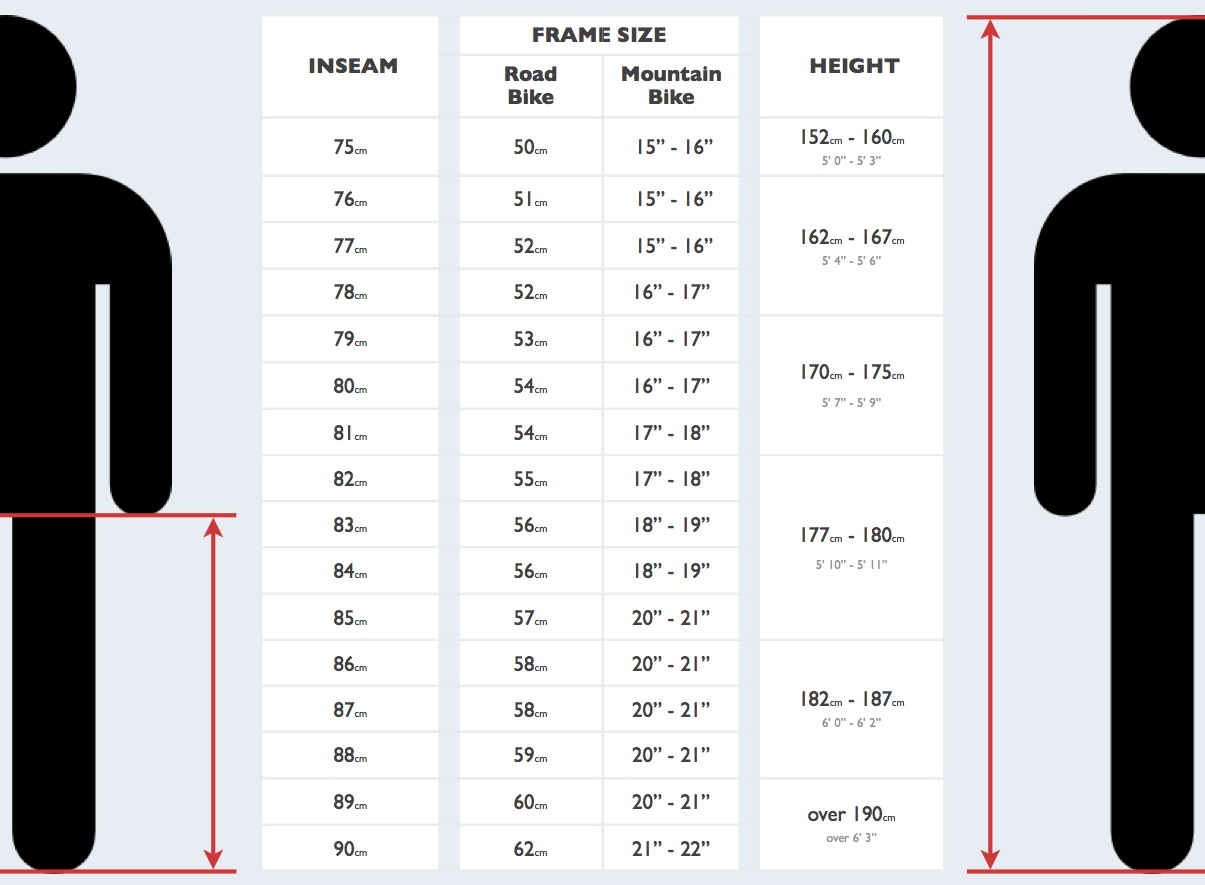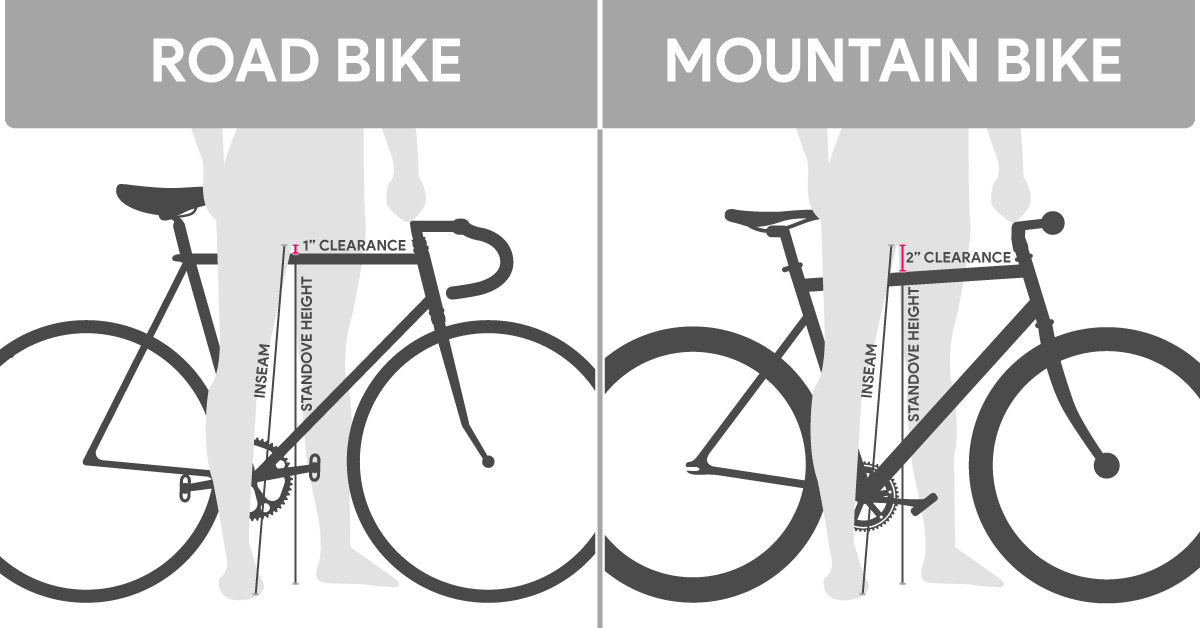Embark on a journey to discover the intricacies of bike frame size selection, a crucial aspect of cycling that can transform your riding experience. This comprehensive bike frame size guide will empower you with the knowledge to find the perfect fit, ensuring maximum comfort, efficiency, and enjoyment on every ride.
Understanding the key frame geometry measurements, taking accurate body measurements, and navigating frame size charts are just a few of the essential elements we’ll explore. Whether you’re a seasoned cyclist or just starting your cycling adventure, this guide will provide you with the insights and tools to make an informed decision about your bike frame size.
Frame Geometry: Bike Frame Size Guide
Frame geometry refers to the specific dimensions and angles that define the shape and size of a bicycle frame. Understanding frame geometry is crucial for ensuring a comfortable and efficient riding experience, as it directly impacts the bike’s fit, handling, and overall performance.
Key frame geometry measurements include:
- Seat tube length:Determines the vertical distance between the bottom bracket and the top of the seat tube, affecting the rider’s leg extension and overall comfort.
- Top tube length:Measures the horizontal distance between the head tube and the seat tube, influencing the rider’s reach and upper body position.
- Head tube angle:The angle formed by the head tube and the horizontal, affecting the bike’s stability and steering responsiveness.
- Head tube length:The vertical distance between the top of the head tube and the bottom bracket, influencing the bike’s overall height and handling.
- Chainstay length:The distance between the bottom bracket and the rear axle, affecting the bike’s wheelbase and pedaling efficiency.
- Fork offset:The distance between the steering axis and the fork’s dropout, influencing the bike’s trail and stability.
These measurements interact to determine the bike’s overall fit and handling characteristics. For instance, a longer top tube length provides a more stretched-out riding position, while a shorter top tube length offers a more upright position. Similarly, a steeper head tube angle results in a more responsive steering, while a slacker head tube angle provides greater stability.
Body Measurements
Determining the correct frame size is crucial for a comfortable and efficient riding experience. Apart from frame geometry, your body measurements also play a significant role in finding the ideal fit. Here’s a guide to the essential body measurements you need to take:
Height
Your height is the most basic measurement required for frame size selection. It is measured from the top of your head to the soles of your feet while standing upright. Use a tape measure or a stadiometer to obtain an accurate measurement.
Inseam
Inseam is the length from the crotch to the floor. It is a crucial measurement for determining the seat height and ensuring proper leg extension while pedaling. To measure your inseam, stand with your feet shoulder-width apart and measure from the inside of your leg at the crotch to the floor.
Arm Length, Bike frame size guide
Arm length is measured from the tip of your shoulder to the end of your wrist. It helps determine the reach to the handlebars and ensures a comfortable riding position. To measure your arm length, stand with your arms extended to the sides and measure from the top of your shoulder to the wrist bone.
Frame Size Charts
Frame size charts are a common tool for determining the appropriate bike frame size based on a rider’s height and inseam measurements. They typically provide a range of recommended frame sizes for a given height and inseam combination.
While frame size charts can be a useful starting point, it’s important to note that they have limitations. The best way to determine the ideal frame size is through a professional bike fit. A bike fitter will take into account your unique body measurements and riding style to recommend the most suitable frame size.
Recommended Frame Size Charts
The following table provides general frame size recommendations based on height and inseam measurements:
| Height (cm) | Inseam (cm) | Recommended Frame Size (cm) |
|---|---|---|
| 150-160 | 70-75 | 48-52 |
| 160-170 | 75-80 | 52-56 |
| 170-180 | 80-85 | 56-60 |
| 180-190 | 85-90 | 60-64 |
| 190-200 | 90-95 | 64-68 |
Again, it’s important to note that these are just general recommendations and may not be suitable for everyone. Factors such as torso length, arm length, and riding style can also influence the ideal frame size.
Riding Style and Purpose
When selecting a bike frame size, it’s crucial to consider your intended riding style and the bike’s purpose. Different riding styles, such as racing, commuting, and mountain biking, require specific frame geometries to optimize performance and comfort.
The bike’s intended purpose also plays a significant role. For example, a bike designed for long-distance touring will typically have a more relaxed geometry than a bike intended for competitive racing.
Racing Bikes
Racing bikes are designed for speed and efficiency. They typically have a more aggressive geometry, with a lower bottom bracket and a shorter head tube. This geometry allows riders to adopt a more aerodynamic position, reducing wind resistance and improving pedaling efficiency.
Get ready for an unforgettable cycling experience with the Tour of Saints Bike Ride 2023 . Explore scenic landscapes, push your limits, and make memories that will last a lifetime. Whether you’re a seasoned cyclist or just starting out, this event offers something for everyone.
Commuting Bikes
Commuting bikes are designed for everyday use, prioritizing comfort and practicality. They often have a more upright geometry, with a higher bottom bracket and a longer head tube. This geometry provides a more relaxed riding position, making it easier to navigate urban environments and reducing strain on the back and neck.
Mountain Bikes
Mountain bikes are designed for off-road riding, requiring a geometry that balances stability and maneuverability. They typically have a slacker head tube angle and a longer wheelbase, providing stability on rough terrain. Additionally, mountain bikes often have a higher bottom bracket to prevent pedal strikes on obstacles.
Bike Fit Adjustments

Once you’ve determined your frame size, it’s important to fine-tune the fit of your bike to ensure maximum comfort and performance. This involves making adjustments to the stem length, saddle height, and handlebar position.
These adjustments can have a significant impact on your riding experience. For example, a too-short stem can put strain on your back and shoulders, while a too-high saddle can cause knee pain. By making the right adjustments, you can optimize your bike’s fit and enjoy a more comfortable and efficient ride.
For those seeking an adrenaline-pumping ride, consider the electric pit bike conversion kit . Transform your ordinary pit bike into an electric powerhouse, unlocking thrilling performance and endless possibilities on the track.
Stem Length
- The stem length is the distance between the center of the handlebars and the center of the head tube.
- A longer stem will put you in a more upright riding position, while a shorter stem will put you in a more aggressive riding position.
- The ideal stem length will depend on your height, reach, and riding style.
Saddle Height
- The saddle height is the distance between the top of the saddle and the center of the bottom bracket.
- A too-high saddle can cause knee pain, while a too-low saddle can make it difficult to pedal efficiently.
- The ideal saddle height will depend on your leg length and riding style.
Handlebar Position
- The handlebar position is the distance between the center of the handlebars and the center of the saddle.
- A too-far forward handlebar position can put strain on your back and shoulders, while a too-far back handlebar position can make it difficult to reach the handlebars.
- The ideal handlebar position will depend on your reach and riding style.
Concluding Remarks

Remember, finding the right bike frame size is not just about numbers; it’s about creating a harmonious connection between you and your bike. By considering your body measurements, riding style, and intended purpose, you can unlock the full potential of your cycling experience.
Embrace the journey of finding your perfect fit, and may every ride be filled with comfort, confidence, and the sheer joy of cycling.
FAQ Compilation
What is the most important body measurement for determining bike frame size?
Inseam length is generally considered the most important body measurement for determining bike frame size.
Can I use a frame size chart to find my perfect fit?
Frame size charts provide a starting point, but it’s important to consider other factors such as body proportions, riding style, and intended purpose for a more accurate fit.
What are the common bike fit adjustments that can be made?
Common bike fit adjustments include stem length, saddle height, and handlebar position, which can be fine-tuned to optimize comfort and performance.
